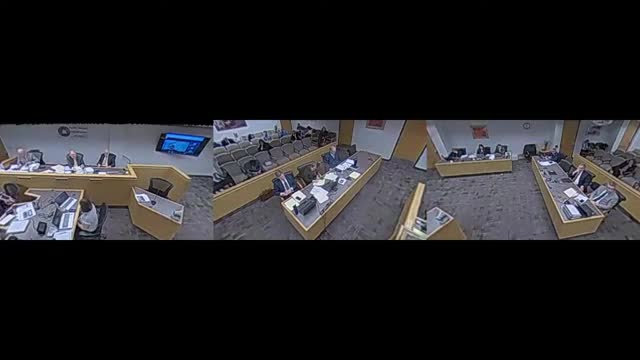Michael Gorman corrects excess liability insurance testimony at public hearing
March 23, 2025 | Utah Public Service Commission, Utah Subcommittees, Commissions and Task Forces, Utah Legislative Branch, Utah
This article was created by AI summarizing key points discussed. AI makes mistakes, so for full details and context, please refer to the video of the full meeting. Please report any errors so we can fix them. Report an error »

In a pivotal government meeting held on March 23, 2025, in Utah, discussions centered around the complex issues surrounding the allocation of excess liability insurance premiums as part of the ongoing Phase III Hearing on the DAO Docket Issues related to RMP's Rate Case. The atmosphere was charged with anticipation as stakeholders gathered to dissect the implications of recent changes in the insurance market, particularly in light of significant wildfire events that have reshaped the landscape of liability coverage.
During the proceedings, Mr. Michael Gorman presented his testimony, which included a crucial correction to his earlier statements regarding the financial figures involved. A typographical error was identified, adjusting the excess liability insurance figure from $82,020,000 to $82,200,000. This minor correction, while seemingly small, underscored the meticulous nature of the discussions at hand.
Gorman's testimony highlighted a significant shift in the market for excess liability insurance, driven by recent wildfire incidents, including a notable case against Pacific Corp in 2023. He explained that despite these market changes, the company intends to allocate its excess liability insurance costs across various jurisdictions, including Utah, using an overhead allocation factor. However, Gorman proposed a critical adjustment: he recommended excluding certain insurance costs that were specifically tied to California and Oregon from the overall premium pool allocated to Utah.
This adjustment could have substantial financial implications. Gorman indicated that by removing the excess liability coverage dedicated to California and Oregon, the total excess liability coverage cost allocated to Utah would decrease from approximately $185 million to $152 million. Consequently, the share of this cost assigned to Utah would drop from the company's proposed $82.2 million to a revised figure of $67.6 million.
As the meeting progressed, the commissioners and other parties engaged with Gorman's analysis, weighing the potential impacts of these adjustments on Utah's ratepayers. The discussions reflected a broader concern about how external factors, such as natural disasters, influence insurance costs and, ultimately, the financial burden on consumers.
The outcome of this hearing could set a precedent for how excess liability insurance is managed and allocated in the future, particularly in regions vulnerable to environmental risks. As stakeholders await the final decisions, the implications of these discussions resonate beyond the meeting room, touching the lives of residents who depend on fair and equitable utility rates.
During the proceedings, Mr. Michael Gorman presented his testimony, which included a crucial correction to his earlier statements regarding the financial figures involved. A typographical error was identified, adjusting the excess liability insurance figure from $82,020,000 to $82,200,000. This minor correction, while seemingly small, underscored the meticulous nature of the discussions at hand.
Gorman's testimony highlighted a significant shift in the market for excess liability insurance, driven by recent wildfire incidents, including a notable case against Pacific Corp in 2023. He explained that despite these market changes, the company intends to allocate its excess liability insurance costs across various jurisdictions, including Utah, using an overhead allocation factor. However, Gorman proposed a critical adjustment: he recommended excluding certain insurance costs that were specifically tied to California and Oregon from the overall premium pool allocated to Utah.
This adjustment could have substantial financial implications. Gorman indicated that by removing the excess liability coverage dedicated to California and Oregon, the total excess liability coverage cost allocated to Utah would decrease from approximately $185 million to $152 million. Consequently, the share of this cost assigned to Utah would drop from the company's proposed $82.2 million to a revised figure of $67.6 million.
As the meeting progressed, the commissioners and other parties engaged with Gorman's analysis, weighing the potential impacts of these adjustments on Utah's ratepayers. The discussions reflected a broader concern about how external factors, such as natural disasters, influence insurance costs and, ultimately, the financial burden on consumers.
The outcome of this hearing could set a precedent for how excess liability insurance is managed and allocated in the future, particularly in regions vulnerable to environmental risks. As stakeholders await the final decisions, the implications of these discussions resonate beyond the meeting room, touching the lives of residents who depend on fair and equitable utility rates.
View full meeting
This article is based on a recent meeting—watch the full video and explore the complete transcript for deeper insights into the discussion.
View full meeting

